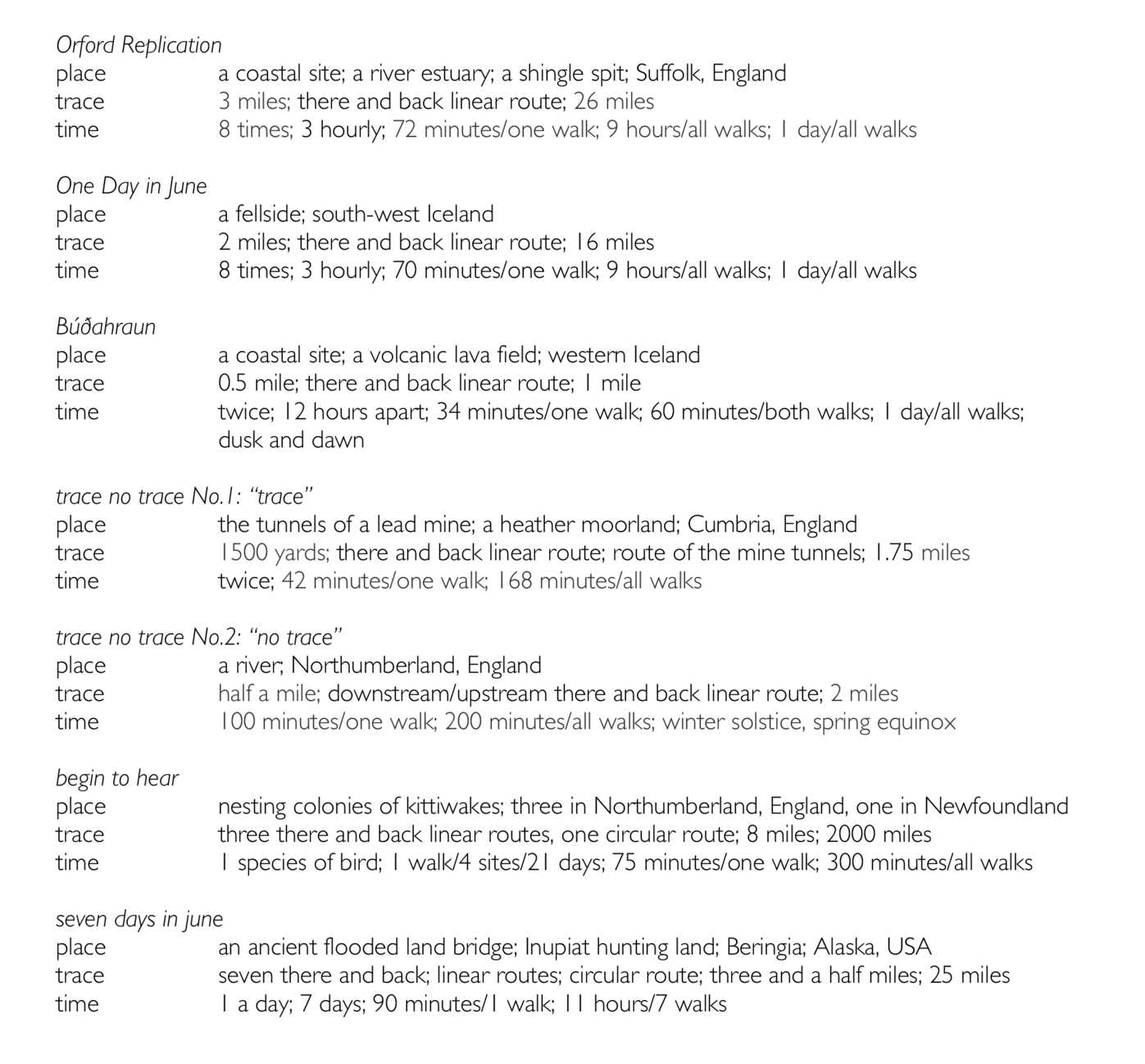Chapter 4. Walking Time: Replicated Walking
In Chapter 2, I reviewed theory and practice relevant to my method and discussed the context in which I move—the land and ideas of place. In Chapter 3, I presented and discussed three works that together explored how it is that I know the world as a sensate embodied walker. Each work offers a configuration of overwhelming, impairing or functionally removing one or more of my senses. However, two of those walks can also be seen as walks that I made on more than one occasion, as walks that incorporate acts of repetition. In this chapter I develop what I came to call replicated walks, walks made more than once in the same place. I began these walks looking to re-configure time. However, in the doing of this, they led me to extend my consideration of place beyond place defined by geography, to place defined by biological phenomena or socio-cultural coherence.
In his essay Repetition Søren Kierkegaard describes conducting an experiment. Having previously enjoyed a pleasurable trip to Berlin, he decides to go again; he stays in the same accommodation and visits the theatre he had previously attended. He then examines how closely such actions could repeat his previous experiences. He finds many things changed, to varying degrees. His second visit is in a different season, in the interim his landlord has married, his preferred rooms are unavailable, the theatre is showing a different play (to a different audience). In the face of all this he concludes ‘there is no such thing as repetition’ (Kierkegaard, 2009, p. 36). Against his stringent criteria—that in a repetition in life everything should be exactly the same, as should his experience of it—his conclusion is unsurprising. The potential of repetition is offered by Eno and Schmidt. In their Oblique Strategies, a set of over 100 cards, each offering a principle underlying their artistic activities, one principle is ‘Repetition is a form of change’ (Eno and Schmidt, 2001), suggesting that the idea of repetition is malleable, nuanced … and useful.
In my exploration of time and place I began to work with the idea of ‘doing something again, and again, and again ...’; I walk a place again and again. There is a lexicon of ‘re-’ words that I could use when thinking and writing about this
redo rerun retell renew remake retake repeat reproduce recreate reiterate replicate
Each have their own nuances and I have settled on replicated walks as my chosen term ... though it is easy to see that others could serve, and remake and retake will emerge as useful when I discuss the works together, later in this chapter. My replicated walks, repeated over natural units of time—day, season—are a way that I can (re-)experience a place and are a method that allows me to experiment with time, and latterly with time and place. In my act(s) of replication the ‘sameness’ of place can be examined, deconstructed and (re)imagined. Out of this emerges ideas of difference, commonality, and dimensionality of time and place. In this chapter, I present seven artworks that each use the common methods of one place, walking, and replication as a way of researching the presenting, ordering and re-presenting of time and imagining place.
4.1 Replication, Time and Place
The works are summarised below (in the order of their making) with the dimensions inherent within their replication—place, trace and time—place(s) of action, a way/route of walking, and the various orderings of times that they occupy.
On to 4.2 Replicated Walks
Back to Table of Contents
